Climate Art Beat®
Winter Calendar 2024
We are pleased to highlight these 14 “must see” live and online climate art events.
Curated Online Art Exhibition
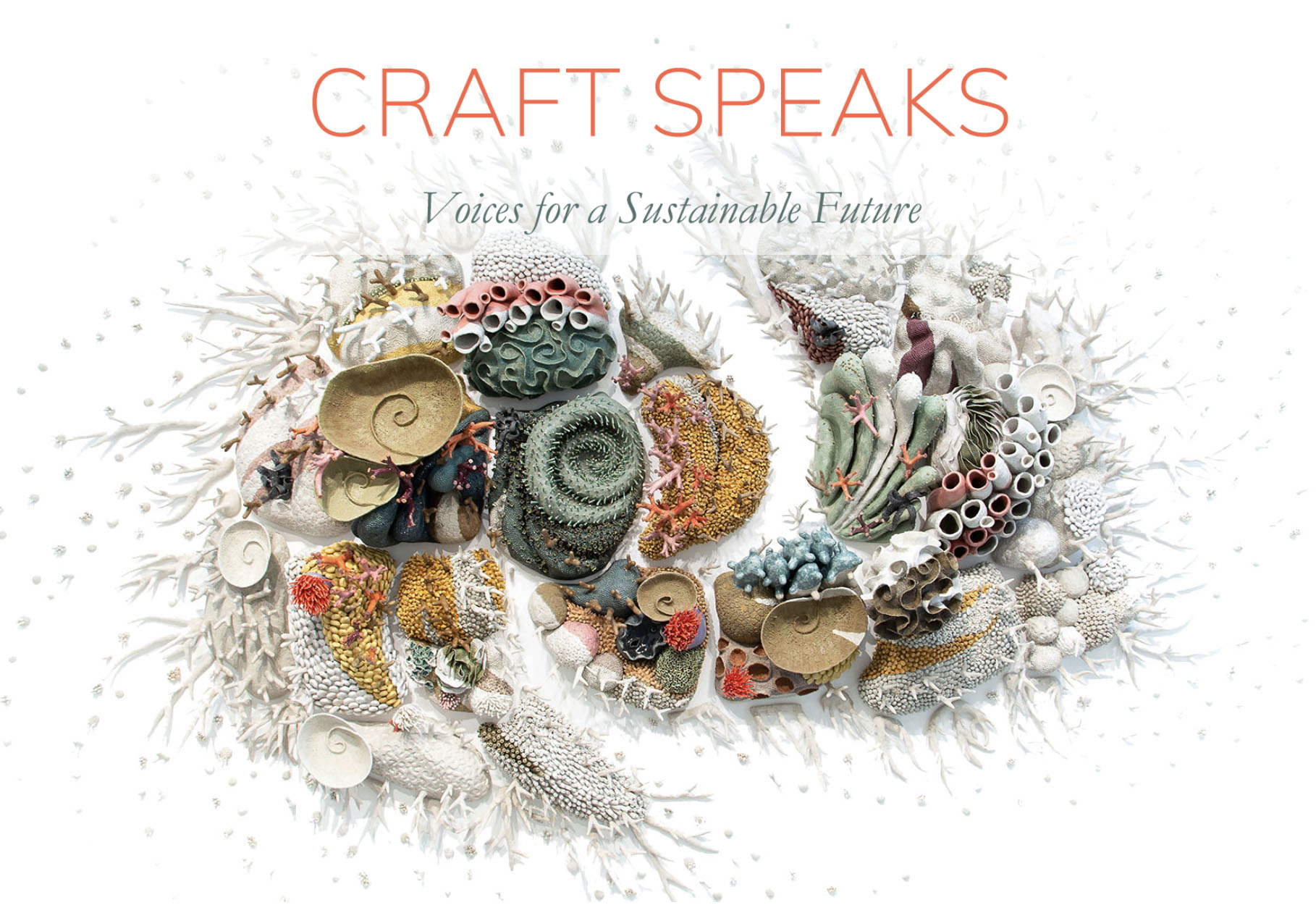
Courtney Mattison, Our Changing Seas IV (2019). Glazed stoneware and porcelain. Dimensions: 11’ x 17’ x 2’. Photograph by Courtney Mattison. ©2019 Courtney Mattison. Courtesy of the artist.
Craft Speaks: Voices for a Sustainable Future
Craft Speaks features work from 30 pioneering artists who guide us to envision and embrace a sustainable future. Their vision and talent offer fresh hope and new insights to a world in need of solutions to environmental challenges.
Santa Fe, NM
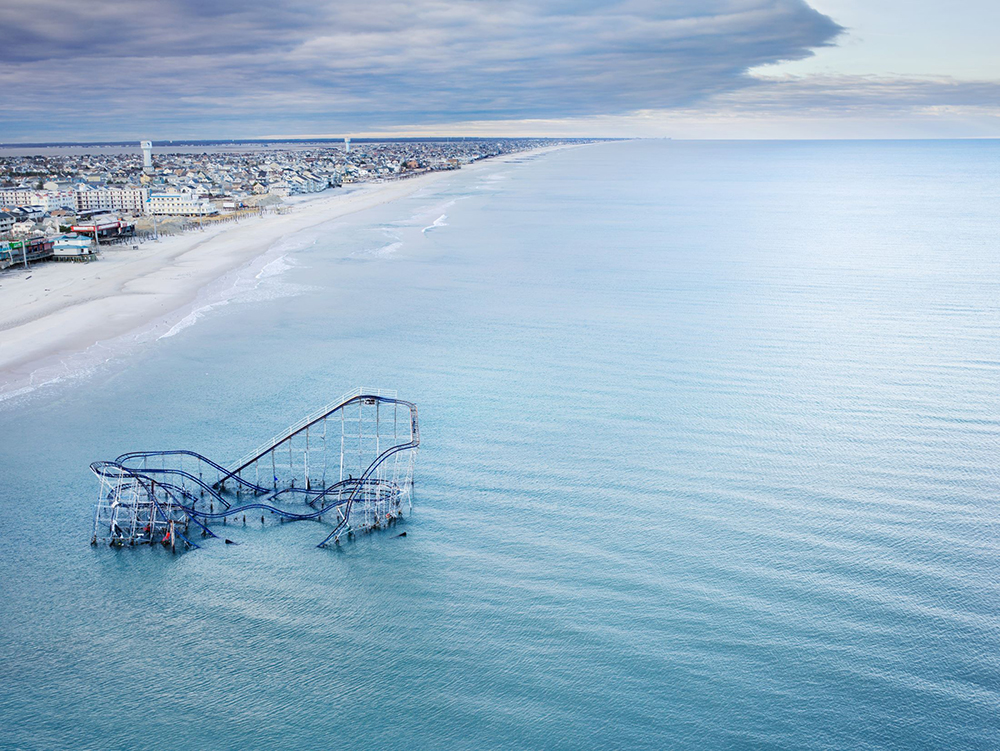
Stephen Wilkes, Hurricane Sandy, Seaside Heights, NJ, 2012. Photograph. ©Stephen Wilkes, 2012. Courtesy of Monroe Gallery of Photography.
This Fragile Earth opens with Stephen Wilkes’ jarring photography of a roller coaster, once a NJ seaside attraction and now a relic of Hurricane Sandy stranded amidst the waters of the Atlantic Ocean. The remainder of the exhibition juxtaposes Wilkes’ idyllic scenes of nature with photographs revealing the scale of devastation wrought by climate change and fossil fuel extraction. A companion online exhibition, Stephen Wilkes: This Fragile Earth, Day to Night, features images of endangered species and habitats, using a photographic technique that captures the passage of time from day to night in a single image. Photographer Stephen Wilkes hopes these photo collections will raise awareness of climate change and channel that awareness into optimism, courage and collective action.
Washington, DC
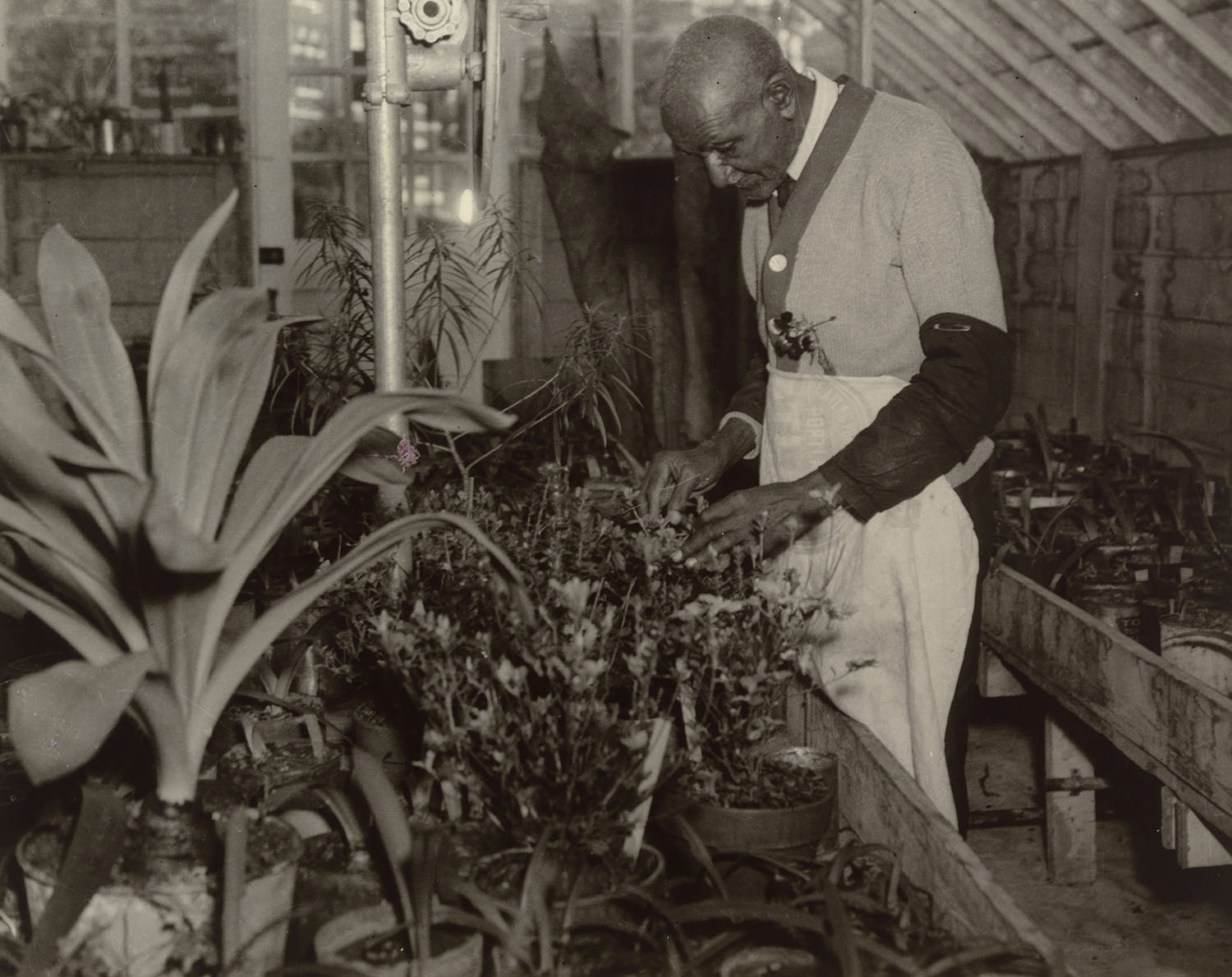
Prentice H. Polk, George Washington Carver, 1938. Gelatin silver print. ©Tuskegee University Archives, Tuskegee, AL. Courtesy of Smithsonian Institution National Portrait Gallery.
Forces of Nature: Voices that Shaped Environmentalism examines some of the key people – scientists, politicians, activists, writers and artists – who have influenced attitudes toward the environment in the U.S. from the late 19th century until today. Through portraiture, visual biography, and the subject’s own words, the exhibition probes these leaders’ enduring impact on public perceptions of the natural world.
Now through Sept. 2, 2024
Marfa, TX
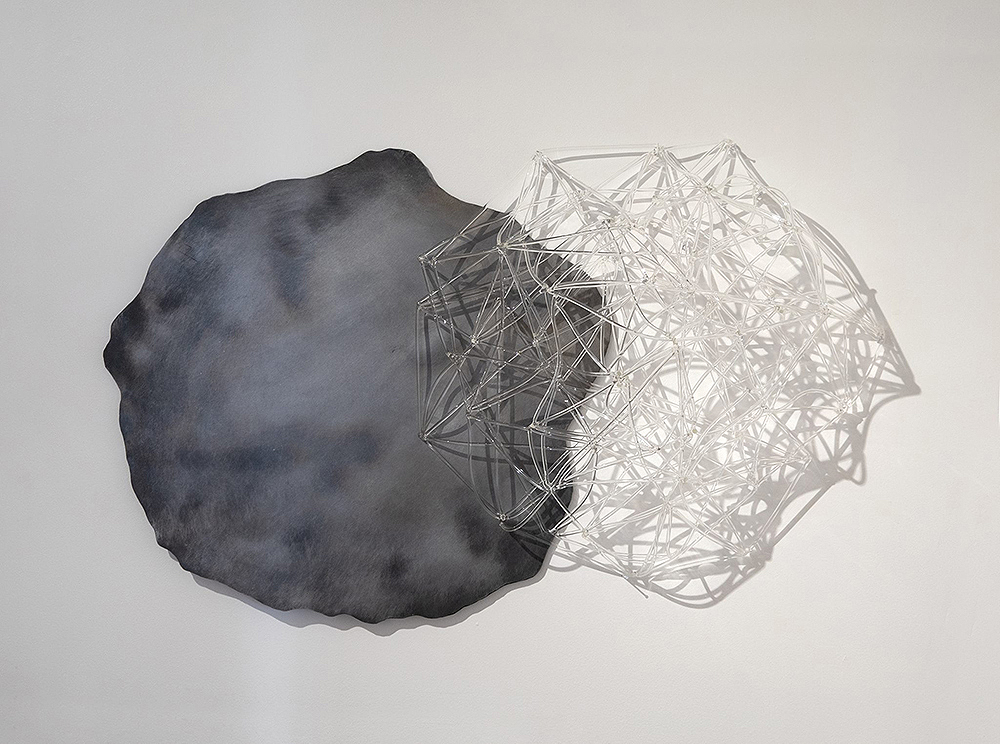
Amy Hoagland, Eclipse, 2023. Hand-torched scientific glass, steel. 40” x 48” x 10.” ©2016 Amy Hoagland. Courtesy of the artist and Rule Gallery
Amy Hoagland views landscape as a time capsule. Its terrains – its rocks, ice and land – contain multitudes of secrets about our past, present and future. Rocks, for example, express time through weathering, layering, and moving. A rock touched today may have originated millions of years ago! In Past Is Present Is Future, Hoagland seeks to explore the vast knowledge stored inside layers of rocks and ice. Her sculptural installations layer scientific glass atop a rock to evoke glacial movement over rock beds. Using glass and rocks, but also reflection, light and shadow, Hoagland challenges our perception of nature, inviting us to a more empathetic coexistence with Earth’s animal, plant, and rock co-habitants.
Now through Mar. 16, 2024
Mystic, CT
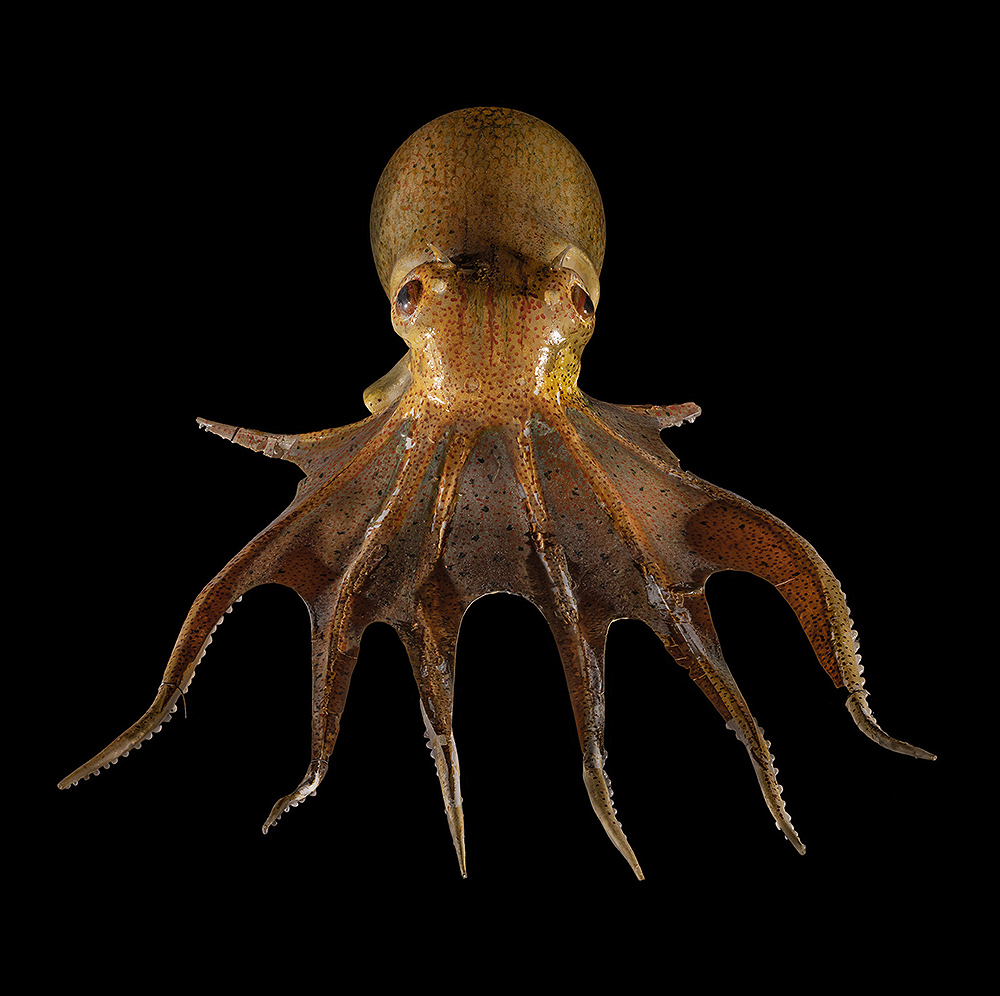
Leopold and/or Rudolf Blaschka, Spineless: Octopus tetracirrhus. Glass. Circa 1850s. ©President and Fellows of Harvard College. Photograph by Joe Michael. Courtesy of the Mystic Seaport Museum.
In the 1850s, a father-son team, Leopold and Rudolf Blaschka, drew on personal observation, scientific records and sailors’ journals to create elaborately detailed glass models of hundreds of marine invertebrates. Museums and universities worldwide covet the models for teaching and display, celebrating the Blaschkas’ faithful attention to form, anatomical detail, and color. Spineless: A Glass Menagerie of Blaschka Marine Invertebrates features over 40 of these exquisite models, assembled from the Museum’s own collections, the Harvard Museum of Comparative Zoology, and other institutions. The exhibition offers a rare opportunity to view this artwork and explore the impact of globalization on marine organisms. Co-curator Dr. James T. Carlton, an internationally renowned expert on invasive marine species, explains: “[T]he models elegantly illustrate the absence of boundaries between art and the science of the sea, including our modern-day environmental concerns for ocean conservation.”
Now through Sept. 2024
New York, NY
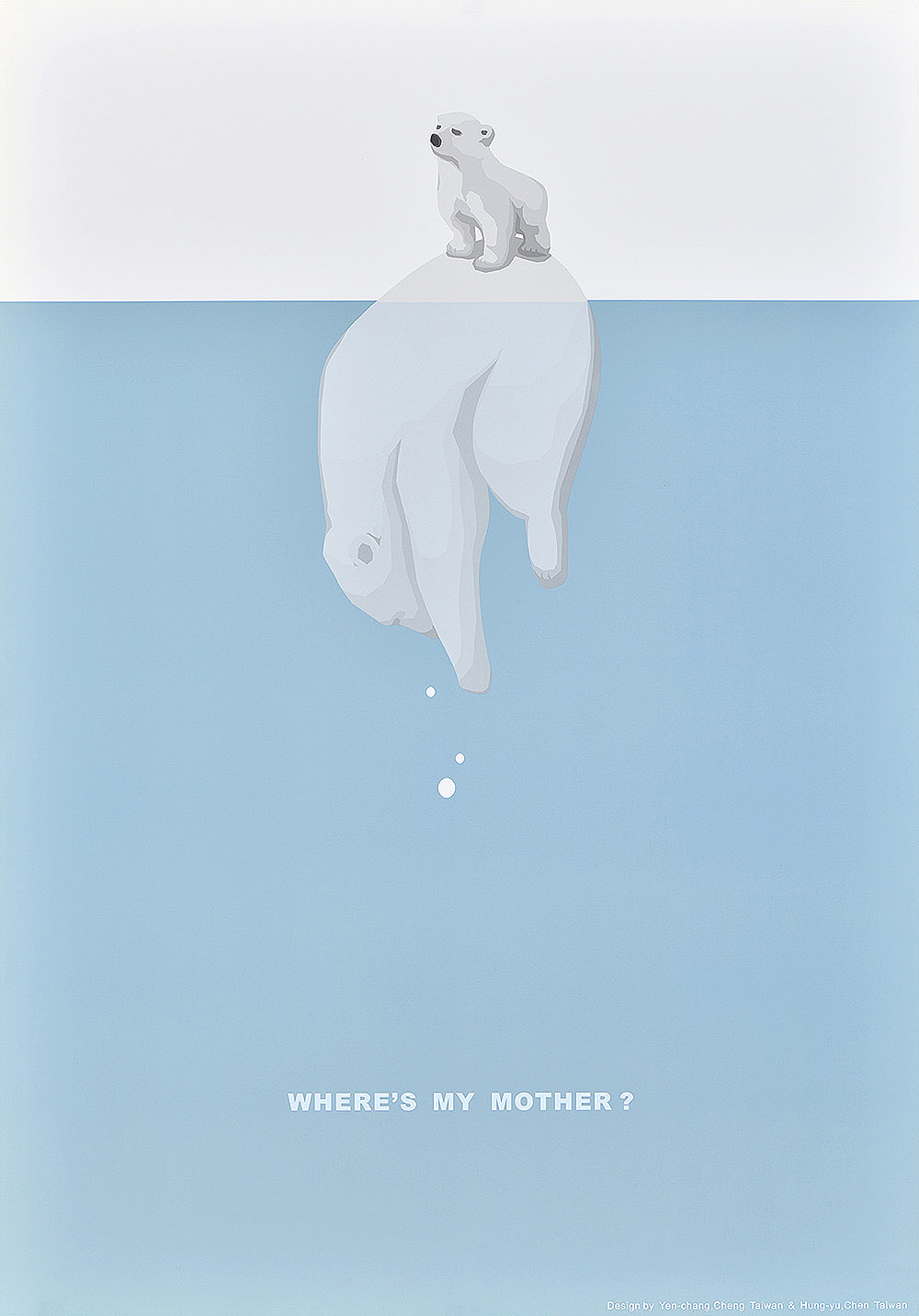
Yen-chang Cheng & Hung-yu Chen, Where’s My Mother? 2008. Photograph. ©Yen-chang Cheng & Hung-yu Chen, 2008. Courtesy of Poster House
We Tried to Warn You! Environmental Crisis Posters, 1970-2020 charts the evolution of our awareness of, and response to, climate change through 33 environmental posters. The curator notes, “Every poster in this exhibition is a failure,” not because these talented graphic artists failed to communicate what was at stake, but because they failed to motivate us to modify our behavior enough. The posters vary widely in style; their messages range from blunt to witty, alarming to optimistic. They reveal the many strategies graphic artists have employed to call attention to a planet in distress – and provide food for thought on how best to communicate the growing body of evidence on the impacts of climate change and the steps we need to take to meet our climate challenge.
Now through Feb. 25, 2024
New York, NY
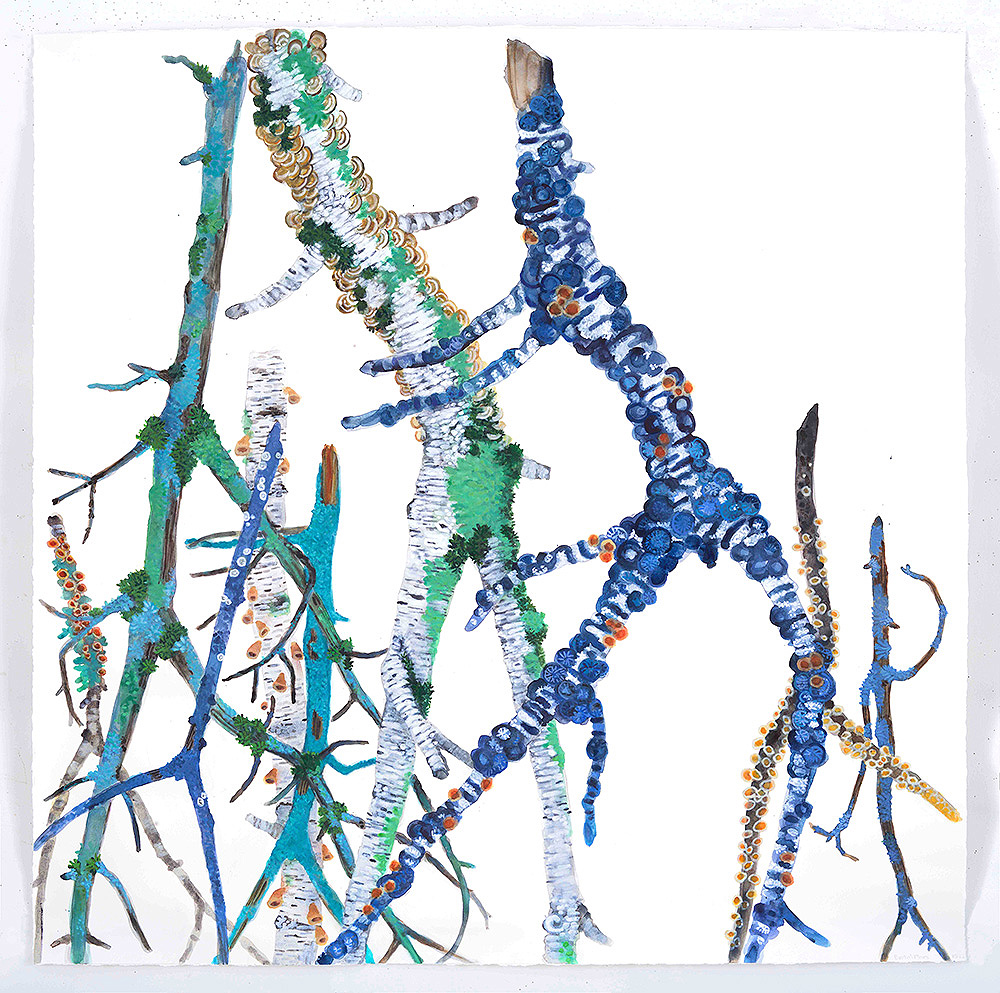
Katie DeGroot, Bustin’ Moves, 2023. Watercolor on paper. 50” x 50″. ©Katie DeGroot 2023. Courtesy of the Kathryn Markel Fine Arts Gallery.
Kathyrn Markel Fine Arts Gallery
Katie DeGroot: Resplendent celebrates the complexity and splendor of trees and their parallels to humans. DeGroot counters the stereotypical image of perfectly pruned, symmetrical trees: “In nature those rarely exist. Trees are individuals. Trees grow to survive, they adapt to their given environment, growing into strange shapes, producing oddly shaped limbs, becoming contortionists to get to sunlight, and bowing to the will of other larger trees. They grow in context to each other and their neighbors, adapting as best they can….” Degroot likens trees to us: we are part of a larger community challenged and formed by our environment. A related gallery exhibition, An Observant Nature (curated by DeGroot) explores how 5 other artists take up DeGroot’s invitation to see nature anew, uncovering new insights as they paint.
Now through Feb. 10, 2024
Shenandoah Valley, VA
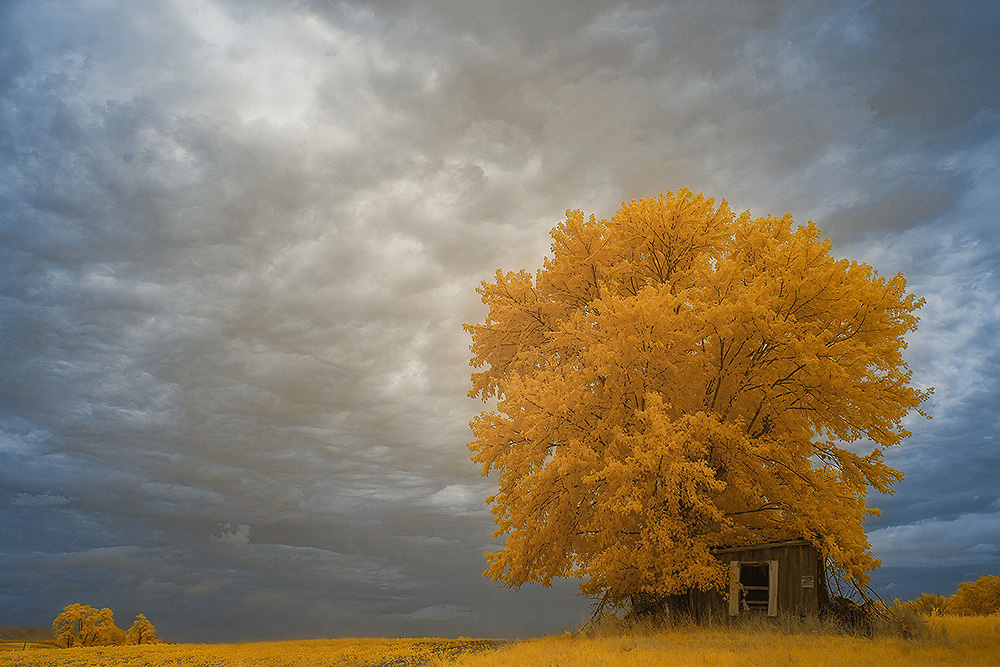
Caitlin Garvey, From The Shenandoah Journey series, 2022. Infrared photograph. ©Caitlin Garvey 2022. Courtesy of the artist.
Newly relocated to the Shenandoah Valley at the beginning of the COVID pandemic, photographer Caitlin Garvey found herself “wondering how one fits into a community.” Discovering in this time of climate change that “questions of identity and belonging are grounded literally and metaphorically in the [surrounding] land,” she began taking infrared photographs of the Valley’s breathtaking views. Her online photographic essay, entitled Shenandoah Journey, “burrows deep into the soil of my new home to acknowledge the awkwardness of what it means to be human, desiring to be at home in myself while striving for something beyond – and acknowledging the smallness of that need in the face of the land that encompasses us all.” A poignant and captivating case for recognizing and conserving our natural heritage!
Mystic, CT
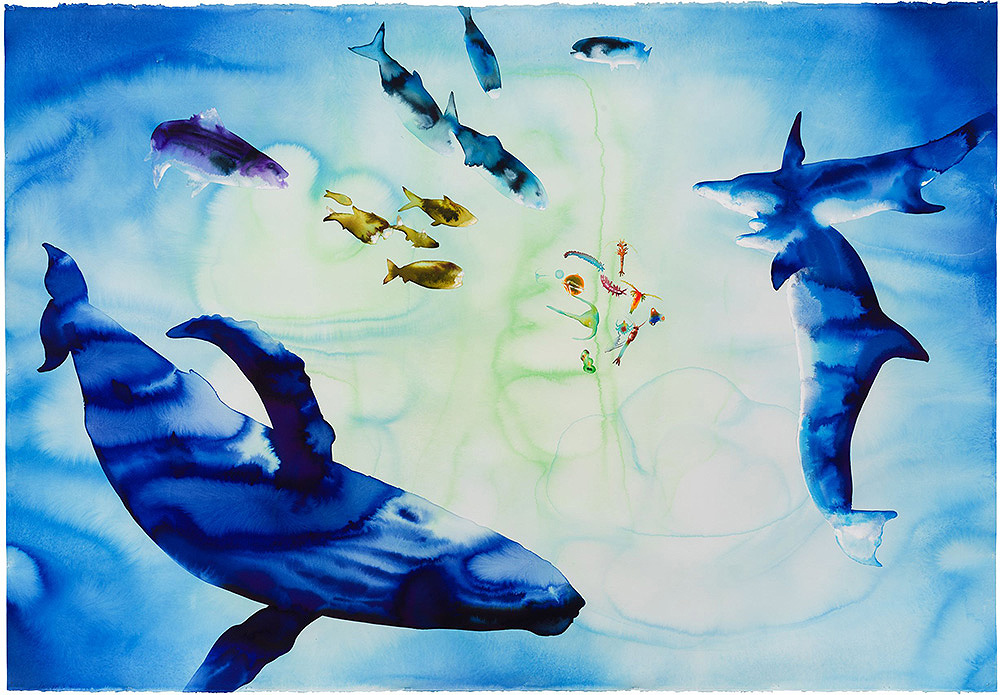
Alexis Rockman, Trophic Web, 2022. Watercolor and acrylic on paper, 2022. 52” x 75¼.” ©Alexis Rockman, 2022. Courtesy of the Mystic Seaport Museum.
Alexis Rockman: Oceanus is the Museum’s first solo exhibition of a contemporary artist – and it packs a powerful message. Rockman calls Oceanus “the story of humankind’s indelible relationship with the ocean and the connections between the sea and our own survival.” A central panoramic oil painting (8’ x 24’) depicts the ocean’s surface – the part most visible to humans. A bevy of vessels ply these waters, a nod to the history of human activity in and on the ocean. But the focus of the painting is on the water deep below – and the impact of humans on its current health and potential future. Other large-scale watercolor paintings examine critical environmental and social issues: climate change, sea level rise, the biodiversity crisis, coastal fragility, industrial pollution, commercial fishing and whaling, human introduction of invasive marine species, the forced and intentional ocean passages of people, the dispossession of indigenous coastal waterways, and our ongoing fascination with the still largely unknown and underexplored deep ocean. A visual tour de force of the ocean raising questions to ponder long afterwards!
Now through April, 2024
Los Angeles, CA
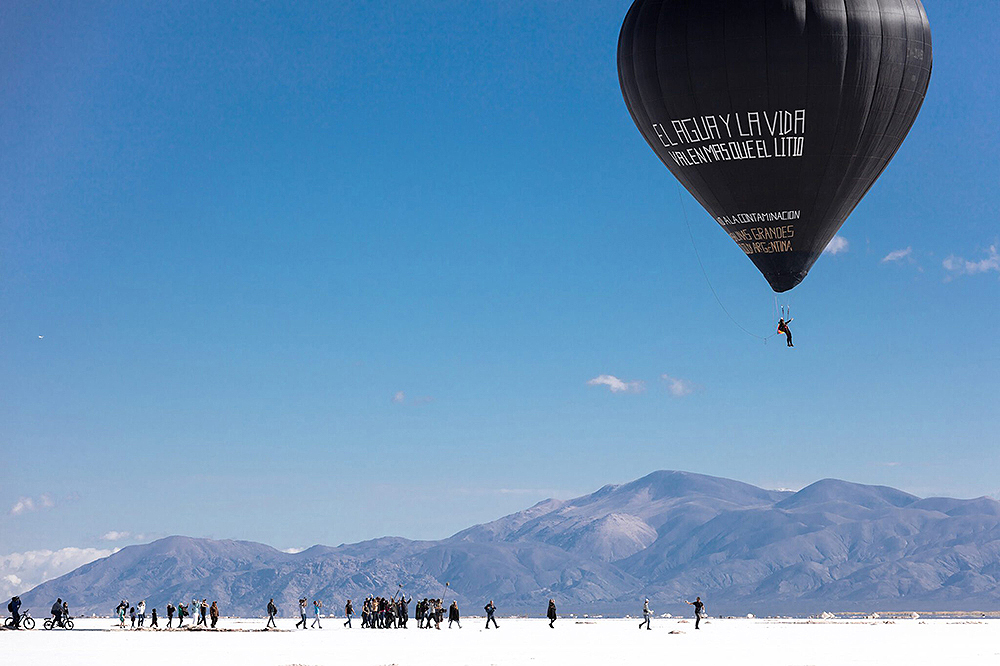
Tomás Saraceno, Fly With Aerocene Pacha, 2020. Photograph. ©Studio Tomás Saraceno 2020. Courtesy of the Aerocene Foundation and Tanya Bonakdar Gallery.
On January 25, 2020, artist Tomás Saraceno launched the first sustainable flight in history – Aerocene Pacha, a fuel-free hot air balloon! Using only sun and air, the balloon lifted a pilot into the sky over Argentina’s Salinas Grandes and landed her safely back on Earth. In large bold letters, the balloon proclaimed: “Water and Life are Worth More than Lithium,” voicing 33 local indigenous communities’ fear that proposed lithium mines will deplete area groundwater, imperil farming, and usurp community rights. The Tomás Saraceno exhibition explores this and other Saraceno projects inviting us to replace an era of climate change with an epoch of solidarity with all Earth’s human and non-human cohabitants.
Feb. 24 – May 4, 2024
Online Art Exhibition

Carolyn Peirce, Asian Elephant, Recycled paper collage ©2020 Carolyn Peirce. Courtesy of the artist.
Honoring the Future: We, The Ark
We, The Ark features Carolyn Peirce’s playful, yet powerful, recycled paper collages of vulnerable and endangered animals. This online exhibition beckons us to rebalance our broken relationship with nature – in short, to revolutionize how we care for our Earth. An accompanying Educator’s Guide offers free online STEAM resources for teachers of middle through high school students.
Hilton Head, SC

Stephanie Kilgast, Coastal Development, 2020. Ink and watercolor on cotton paper, 2022. ©Stephanie Kilgast, 2022. Courtesy of the Coastal Discovery Museum.
Coral reefs feed and shelter 25% of all aquatic species, protect shorelines from storms and surges, filter surrounding waters, and support tourism. But climate change, pollution, and overfishing are devastating reefs worldwide. Intricate Oceans: Coral in Contemporary Art features the work of 7 contemporary artists who are deeply concerned about the health of coral reefs. Their artwork inspires public awareness and conservation action for ocean health.
Now through Mar. 24, 2024
Curated Online Art Exhibition
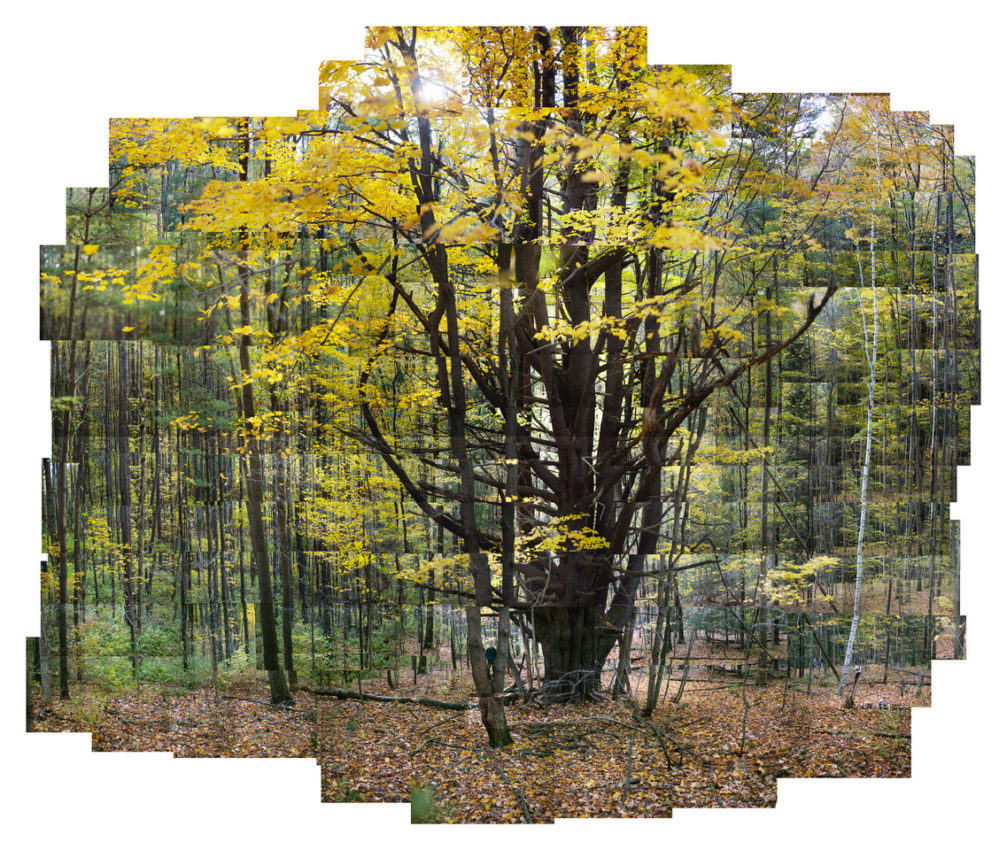
James Balog, Eastern White Pine, Lenox, Massachusetts, October 2002. Photograph. ©2002 James Balog Photography/Earth Vision Institute. Courtesy of the artist.
Honoring the Future: Honoring Trees
Honoring Trees features the work of 14 leading contemporary artists. Collectively, these works invite us to reflect on the splendor of trees, the challenges climate change and human stresses pose to trees, and the opportunity to respond with creativity and courage. The accompanying Educator’s Guide offers links to free, easily accessible videos, articles and other STEAM resources for use in art, science, history, social studies, language arts and civics classes.
Grand Rapids, MI
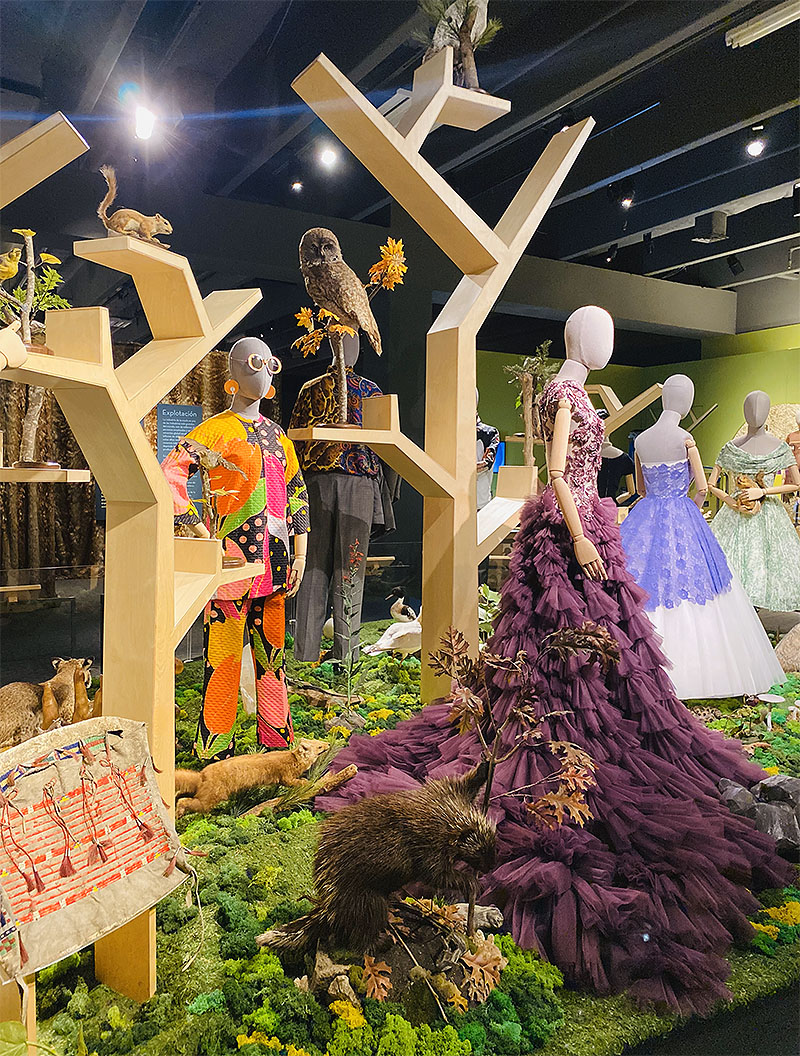
Fashion + Nature. Exhibit assemblage. Installation view. ©Grand Rapids Public Museum 2023. Courtesy of the Grand Rapids Public Museum.
Fashion + Nature explores how nature has both influenced, and been impacted by, fashion. The exhibition explores three themes. It surveys historical fashion trends, showing the varied ways materials, colors, patterns, and shapes in nature have inspired clothing styles and accessories. It examines the fashion industry’s impact on the environment, human lives, and the global economy. And it highlights innovations that empower producers, designers and consumers to reduce the fashion industry’s harmful environmental impacts. Interactive components allow visitors to “try on” fashion pieces virtually, test their environmental knowledge (e.g., how much water is consumed in various fashion-related activities?), and become more sustainability-conscious consumers.
Open Now
